A metal roof is a metal roof, right? WRONG. Standing seam and exposed-fastener roofs are both metal and may even serve similar purposes, but the two styles are very different indeed.
Standing Seam Metal Roof 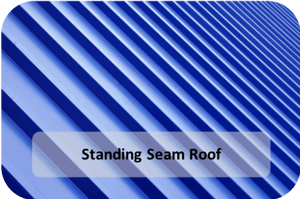
Let’s start with the standing seam roof, or SSMR as it is commonly abbreviated. The profile of this roof has flat panels intersected with evenly spaced vertical legs or seams. Fastenings are concealed on these panels – hence the reason the profile is commonly called “concealed fastener.” SSMRs can be attached to roof decks via clips or with a fastening flange.
Fasteners are driven through clips into the roof deck but do not pierce the metal panels. The clip and the fasteners are then hidden within the standing seam. Thus, the panel is attached to the clips and locked together – either by snap-fit seam geometry or mechanically folded during installation. SSMRs come in a multitude of shapes and sizes (single-folded, double-folded, T-shaped, bulb-shaped, etc.) and each either snap together or are mechanically seamed. The industry consensus favors SSMR for its higher quality, ability to respond to “thermal cycling” and aesthetic design.
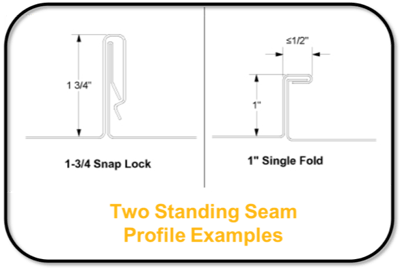
The Benefits of Standing Seam
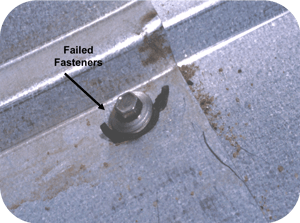 Warranty Intact!
Warranty Intact!
While material and finish warranties are generally the same, most SSMR systems are offered with better warranties on the entire system. Some manufacturers also offer extended assurance that the roof won’t leak (weather-tightness warranty) over a given period of time. Concealed-clip attachment lends itself to a much lower possibility of leakage compared to an exposed-fastener system, which can require hundreds or even thousands of fasteners and rubber grommets. All those fasteners and grommets are subject to installation error and fatigue in service because they penetrate the weathering surface and “pin” the panel to the structure.
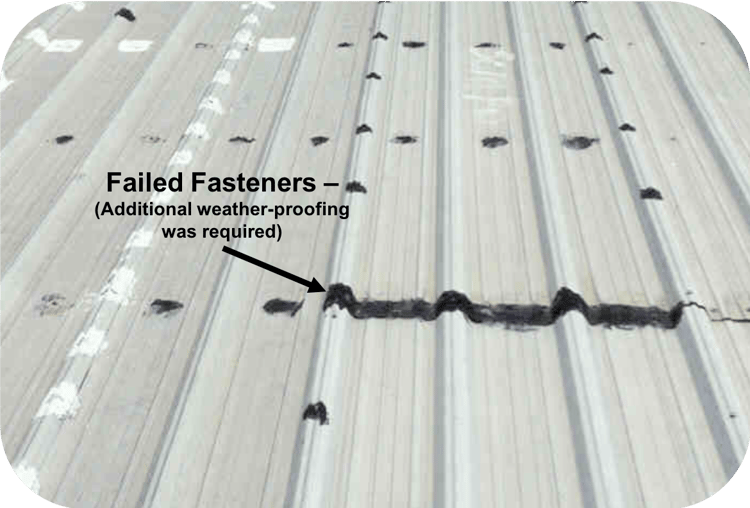
Mount Away!
Of course, to toot our own horn, another way to preserve your SSMR roof warranty is to utilize S-5!’s zero-penetration attachment solution technology. Our clamps can attach almost anything to your standing seam roof – without piercing the metal and without violating the roof’s warranty. Rooftop mounting is a breeze when you do it The Right Way®.
Metal Roofing vs. Asphalt Shingles
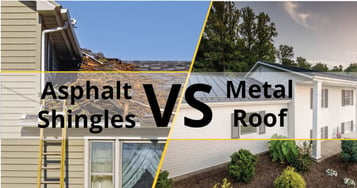 |
Are you considering making the switch? Think metal roofs are noisy? Too hard to maintain? Think again! Read our comparison on the two types and discover which one is the best material for your roof. Learn More |
Clean Lines
The most obvious difference between SSMR and EF is the lack of visible fasteners. Beyond the aesthetic benefits, exposed screws are a greater potential source of installation goofs. Under- or over-tensioned screws and stripped screws aggravate the obvious - that holes in the roof can leak if not properly executed. Direct attachment by screw fastening also does not provide for thermal relief when panels grow and shrink in hot and cold temperatures. SSMR avoids these pitfalls with concealed fastening that enables thermal response without fatiguing the attachment. (Learn more about thermal response below.)
Maintenance-Free…Almost
Generally speaking, metal roofs last much longer than other roofing types. Metal’s durability and responsiveness make it a smart choice for both commercial and residential buildings. But SSMR profiles typically require less frequent maintenance - at least in terms of checking for loose or corroded fasteners. “Maintenance” is usually a matter of routine inspection for small problems before they become big ones. Removal of pine straw or deciduous leaf debris is no less critical and should be done at least every couple of years - regardless of profile type.
Thermal Movement Please
Metal panels need to be able to expand and contract. This is called thermal movement (see graphic below). When a metal panel heats up from the sun, it expands – increasing in length. Then it contracts when it gets cold, reverting back to its original dimensions. In addition, this process is directly related to panel length. It will also accumulate and multiply across panel sections that are joined end-to-end with mechanical fasteners. This means two or more joined panels each adjust to temperature changes but respond to the fluctuations as one panel.
A Look at Thermal Movement in Roof Panels
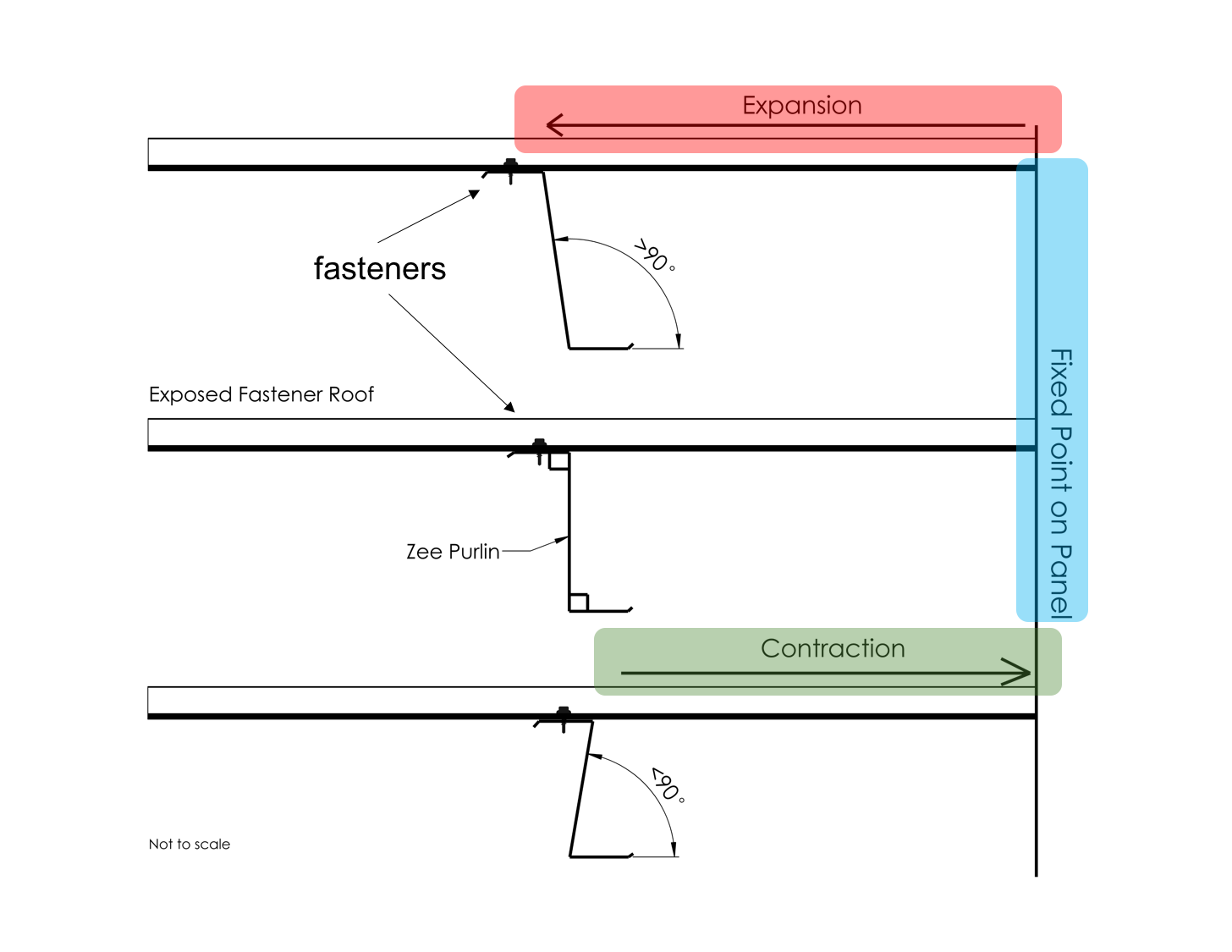
Luckily, thermal movement does not occur across panel widths. This is because panel rib or seam geometry enables enough flexure to mitigate thermal movement, so it does not accumulate. SSMRs are never double-pinned to the building, so their expansion and contraction abilities are increased.
One in Every Color
SSMRs are very modification-friendly. Choose your desired paint color, and select Galvalume, copper, zinc or aluminum depending on design preferences.
Exposed-Fastened Metal Roof
Exposed-fastener roofs involve driving fasteners through the panels and directly into the roof deck. The edges of the panels overlap, and fasteners are screwed through both layers. The fasteners remain visible.
 The Benefits of Exposed-Fastener Roofs
The Benefits of Exposed-Fastener Roofs
Cost
Exposed-fastener (EF) roofs are less expensive than standing seam systems. The lower cost comes from the fact that these roofs are manufactured with thinner-gauge and wider-dimensioned panels, reducing material handling aspects of installation. This generally means that less roofing material is needed overall and thinner panels typically cost less. Additionally, EF roofs don’t use clips, which also reduces costs (e.g. fewer components and a simpler installation process, so the overall total cost of roof is less).
Save on Installation Time
With EF roofs, you don’t have to hand-seam or mechanically seam the panels together. Having the panels overlap and fasten together at the same time means a reduction in overall labor.
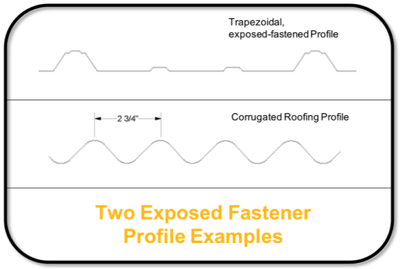
Will It Weather the Weather?
EF roofs do still offer substantial protection against harsh weather elements. But it is important to note that industry standards for SSMR versus EF roofs are not necessarily equal. So, for example, wind-uplift testing may or may not have been performed on EF roof profiles. Also, don’t expect weather-tight warranties to be included. Holes are required to secure roof attachment to the deck - a process that is more prone to installation error. It’s not called an exposed-fastener roof for nothing.
I Think I Can…I Think I Can
As mentioned above, SSMRs require more finesse during installation. Many common EF roof panels are sold at big-box stores and many are even DIY project-ready for those weekend warriors.
Different Strokes for Different Folks
As much as aesthetics are touted with SSMRs, the lack of hidden fasteners on roofs is still appealing to many for practical reasons. If cost, ease of installation and the need to match your roof to surrounding buildings are aspects weighing in your decision-making, then EF might be a good choice.
More Maintenance
It is always advisable to perform routine maintenance on any roof (metal or other). And SSMRs generally don’t require as much maintenance as EF roofs. (In either event, one should still remove debris, clean gutters, remove stains, scan for scratches and check trouble spots for potential corrosion). That being said, EF roofs do come with an additional upkeep checklist (e.g. checking fasteners for damage, checking panel lapping locations, checking for water infiltration, etc.).
Never the Twain Shall Meet
Standing seam and exposed fastener are distinctly different concepts for metal roofing. We’ve compared them above, but ultimately the roofs serve different purposes depending on location, weather, design, and more. Aesthetically speaking and weather-wise, SSMR offers secure zero-panel-penetration as well as a long-lasting roofing solution. It protects some of the most prestigious buildings in the world. If cost is a big one for you, and you are also considering installing it yourself, EF roofing may be a smart choice.
Secure and Safe Mounting for SSMR and EF
Regardless of the profile, S-5! has a clamp or bracket solution to fit your needs. From snow retention, to solar panels, walkways, HVAC, communication equipment, fall protection and more, your current mounting conundrum will soon be an issue of the past. Not sure what your best solution is? Check out this informative blog on finding The Right Way® and/or, find more assistance from our Technical Support.


